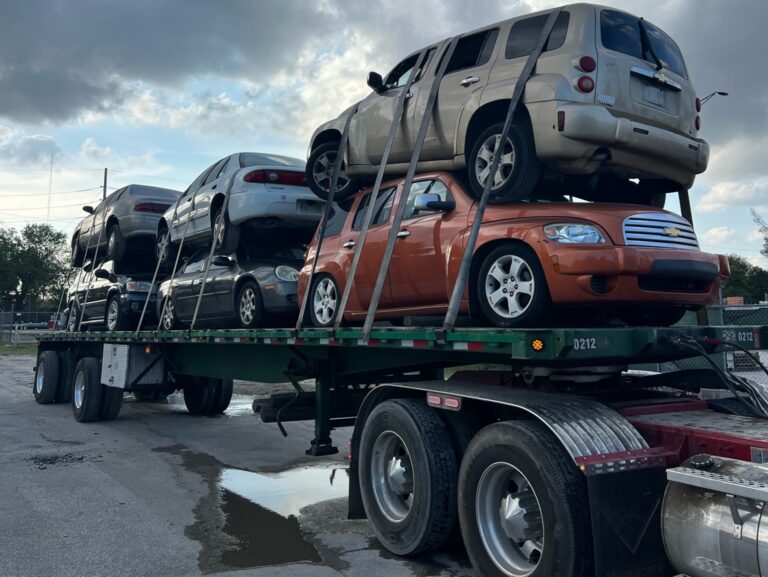What Should You Do if Your AC Unit is Not Cooling Properly After Installation?
After investing in a new AC unit, the last thing you expect is for it to struggle with cooling your space. If your AC isn’t performing as it should after installation, it can be both frustrating and concerning, especially during hot weather.
Understanding the potential causes and knowing the right steps to take can help you quickly address the issue and restore your home’s comfort. In this guide, we’ll explore what to do if your AC unit isn’t cooling properly after installation, offering practical solutions to get your system back on track.
If you need expert assistance, reach out to Beltway Air Conditioning & Heating for your AC installation needs.
Check Thermostat Settings
Setting your AC’s thermostat correctly is critical for efficiency and comfort. Incorrect settings can lead to higher energy use and quicker wear. A programmable thermostat saves energy and money by adjusting temperatures based on your schedule.
Verify Temperature Setting
First, set your thermostat below the room’s temperature to start the cooling. If it’s set too high, the AC won’t turn on. Make sure the display shows the temperature you want. Also, place the thermostat away from windows or heaters to avoid incorrect temperature readings that could mess with the cooling.
Switch to Cooling Mode
Make sure your thermostat is set to “Cool” to cool your home. Switching it on should start the AC, signaling it’s working. If confused about changing modes, check the user manual for guidance.
Replace Thermostat Batteries
Sometimes, your thermostat just needs new batteries. Take off the cover, put in new batteries the right way, and reset your settings to make sure it works right.
Inspect Air Filters
Regularly checking air filters is essential for clean air and efficient heating and cooling systems. Clogged filters can reduce airflow, increase energy use, and risk breakdowns. Aim to check them every three months, or more frequently in dusty areas or homes with pets.
Locate Air Filters
First, find where the air filters are in your AC system. They might be in the unit itself or part of the ductwork. Your installation manual will show you exactly where to look. Once you find them, mark their locations. This makes it easier to check and change them later.
Check for Dirt and Debris
Next, examine the air filters closely. Look for any visible dirt and debris that could block airflow. Don’t forget to check the outdoor unit too. Leaves, grass, and other obstructions can also cause problems. Inside, see if there’s dust buildup around vents and coils. This can affect your indoor air quality.
Replace or Clean Filters
If you find a dirty filter, take it out of its housing. For reusable filters, wash them with water. Make sure they’re completely dry before putting them back. Disposable filters should be replaced with new ones that match in size and type.
Remember, clean filters help keep your indoor air fresh and your system running smoothly.
Examine Circuit Breaker
Before touching your AC’s circuit breaker, turn off its power for safety. Check it for damage, overload, or short circuits. Ensure connections are secure and not rusty to maintain your AC.
Locate the breaker in your home’s electrical panel for troubleshooting, making sure it’s accessible. If a breaker is off or not fully on, it has likely tripped. Look for scorch marks or a burning smell, which indicate serious electrical problems. To reset a tripped breaker, flip it off and then on to possibly fix your AC.
Ensure Proper Airflow
To keep your AC working well, change its air filters often to prevent clogs. Clear leaves and trash from around the outdoor unit to boost airflow. Make sure vents and registers aren’t blocked by furniture or curtains, and clean them for improved air movement inside. Maintain a 2-foot clear area around the outdoor compressor, removing obstacles and trimming plants. Also, check your ductwork for leaks by looking for gaps or feeling for air leaks when the AC runs, and fix any leaks for better airflow and cooling.
Check for Refrigerant Leaks
To keep your AC running smoothly and avoid high bills, fix refrigerant leaks quickly. Use soapy water, electronic detectors, or dye tests to find them. Look out for poor cooling, whistling noises, and uneven temperatures as leak signs.
For air leaks, try smoke pencils, incense sticks, or infrared thermometers. If it’s too tough, get a certified HVAC technician to fix it and get your AC working again.
Seek Professional Assistance
Hiring a professional to install your AC guarantees a safe and correct setup, following all guidelines. They’ll make sure your AC runs efficiently and lasts longer, preventing costly errors. Plus, they offer advice on maintenance and energy efficiency, making the investment in professional installation worthwhile.
Find a Certified HVAC Technician
After checking the installation, find a certified HVAC technician. Choose someone with proper certification and licensing. Read reviews and ask people you know for suggestions. Pick a technician experienced with your AC’s brand and model for better repair work.
Schedule a Maintenance Visit
Book a yearly check-up with a reliable AC expert to keep your unit running smoothly. They’ll clean parts, check coolant, and look at electrical stuff. Talk about any problems you’ve noticed. This keeps your AC working well and helps avoid future issues.
Discuss Potential Solutions
If issues keep happening, discuss lasting fixes with your technician. Consider upgrading to a better unit or installing zoning systems. Compare the costs of fixing it versus getting a new one with expert guidance. Often, a new system is more reliable and efficient, keeping your home comfy for longer.
For Help with Your Air Conditioner Issues, Contact a Professional
If your AC isn’t cooling properly, there’s no need to worry. Start by checking a few basics like the thermostat settings, air filters, airflow, and looking for any leaks.
Confirm that the installation was done correctly, and if you’re uncertain, it’s a good idea to consult a professional. This approach can save you time and money while keeping your home cool.
Additionally, regular maintenance by an expert can help prevent future problems. To guarantee a comfortable summer, consider scheduling a maintenance visit with an HVAC professional today.







